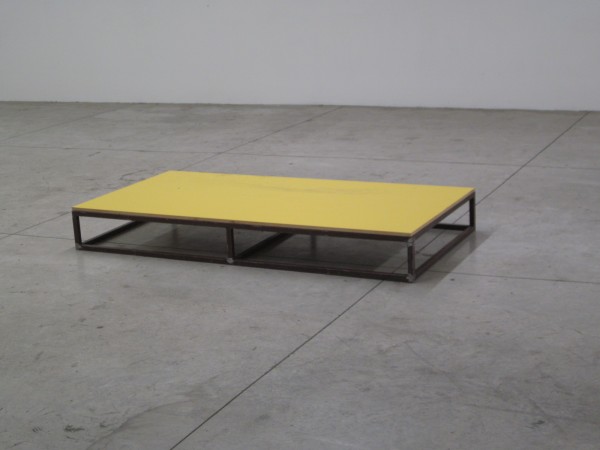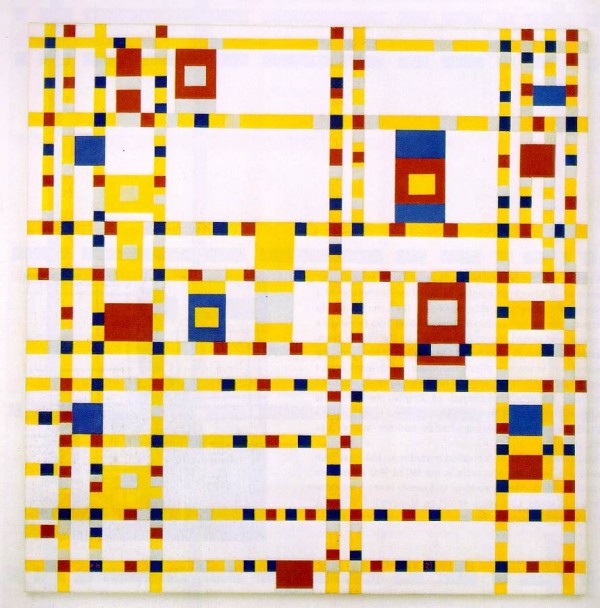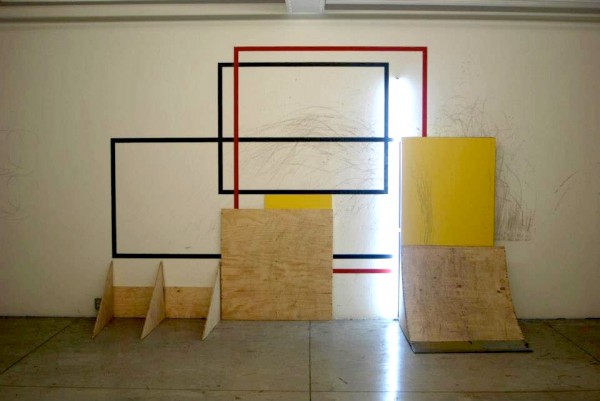It’s a rainy summer night in Guadalajara. Zooming through the dark, the jeep I’m riding in feels more like a powerboat as it leaves a black wake in the flooded streets. This ain’t no British rain – and thank God for that. (I’ve had enough drizzle for two lifetimes.) Palm fronds shake and the heavy rain suddenly turns to hail. The frothy water in the street is peppered, and ice pounds the roof. ‘What do you call this?’ I ask, shouting from the backseat in my remedial Spanish. ‘Granizo,’ my friend replies. ‘Graaneeezooo’ I repeat, wondering if a silk shirt and a mini skirt was a good idea. I ask for perhaps the forth time during the car ride where we are going and what exactly we are doing. My friend merely replies something along the lines of, he can’t really explain – but there will be drinks – and it’s ‘an art thing.’ After a week in an unknown city where I don’t speak the language – I’ve learned to go with the flow.
We must be in downtown Guadalajara, but all I can see is the glisten on the streets as I bail out. I run through the torrential rain across the pavement, dodging granizo and landing on the dry doorstep of an airy, modern restaurant called Café Benito. Having just escaped the rain and hailstones, I am now immediately bombarded by something else. Blasts of an unexpected kind of music: vintage, improvisational jazz pulsates from the DJ booth with astonishing force. Music you usually imagine softly breathing from a record player booms against the cement walls like a dubstep concert. Shaking out my hair, I quickly realize this isn’t just a restaurant – but a uniquely hybridized and multi-disciplinary space. The back of the bar is connected to a theatre of sorts and I can catch a clean white glimmer of an adjoining gallery space. Naturally we head for the bar and order a round of cervezas. My friend advises that, despite being 2 hours late, we are right on time for the performance, a thing I’m liking more and more about Mexico.
Meandering through the modern décor scattered throughout the hard-edged cement space towards the gallery, I meet a number of Guadalajara’s tight knit crew of contemporary artists, who, in addition to all being good friends, seem to have matching mustaches and tattoos. (I discover that these ‘homemade’ tattoos were the handiwork of visiting artist Thomas Jeppe’s recent residence and assumingly, a night full of escalating dares and mezcal.) Guadalajara’s art scene is personal and friendly – after a few days, these guys all know my name. Thankfully, I missed tattoo night. The curator, Antoine Thelamon, shouts his hellos over the music, reluctant to clarify what I am about to see, except for teasing about a little surprise in store. The artist on show is a locally based artist, Adrian S. Bara, who walks me towards the installation.
Beyond the bar, and still reverberating with loud jazz, is a pristine gallery space scattered with minimal sculpture objects. A low steel platform with a golden yellow top humbly blushes in the centre of the floor, a hint of colour in the cool space. Roughly polished with hints of iridescent circular marks, a grey steel bar juts from a high corner, sloping 45 degrees and before being mechanically bolted directly to the concrete floor. Across the cavernous space is a curious scene: a blank section of wall seems taped off, as if to signify an invisible, white painting that once was there. Below either side of the black perimeter, two spotless concave wooden objects hug the lower corner of the wall. In the typical fashion, since Minimalist sculpture encourages the viewer to walk around the space, I pace around and under, along and through….but soon Bara curiously encourages me to stay close to the walls as the a hip crowd gathers to watch the performance.
I am slowly piecing together the work when two teenagers roll in on skateboards battering through the space. Uh, is that allowed? It takes the sound of a skateboard deck smashing and scraping along the yellow sculpture at the centre of the gallery for me to realize exactly what’s happening here. The steel bar becomes a rail and the two wooden sculptures across the space now so obviously become ramps. Artworks turn into obstacles, as gallery becomes skate park – and all the usual rules of either arena go right out the ventana. The world where artwork is precious, jealously guarded and forbidden to touch is shattered with the loud slap of wood, metal and wheels.
The skaters recoil and then paw at the floor like charging bulls, flinging themselves down to the end of the gleaming gallery where the wooden ramp pilots them up the wall and across the blank taped off space. Between the perimeters of the black square, a gray arch appears on the white wall, the first stroke in an unusual action painting. This action is repeated at intervals by the two skaters, who soon start to compete for the longest and highest mark. We lap it up.
The untitled performance by Bara, the first in a series and loosely described to as ‘abstract skating’, is inspired by Piet Mondrian, and specifically his late painting from 1942-3 called Broadway Boogie Woogie. Famously Mondrian painted it after moving to New York after the onset of WWII, and, in discovering American jazz, redefined his painterly style as more staccato and rhythmic, echoing the beats of the new music and of the bustling city of New York itself. The yellow platform in Bara’s installation echoes the gold hues of the piece, and Mondrian’s famous black thick lines is repeated in the steel rail bar.
It is at this point when I realize how macho the whole amalgamation is – it’s the string that ties all these seemingly disparate elements together: Minimalism, skateboarding, jazz and Action Painting. The machismo historically intertwined with Minimalism and sculptors like Carl Andre, Richard Serra, Donald Judd and Robert Morris is legendary. Indeed the artist group I fell into is also a bit of a boy’s club. Contemporary comparisons to the likes of Aaron Young also come to mind, who combines daredevil antics and action painting. Working as the ‘artist as bad ass’, Young’s works are executed with motorcycles doing doughnuts instead of a paintbrush, and, like the original crash and burner, Pollock, places the painterly surface on the floor. Using athleticism in much the same way, Bara in turn keeps the painting surface vertical. The skateboard scrapes index and chart the escalating skills and masculine prowess of the skaters. Of course the typically masculine-dominated street art also comes to mind, as graffiti ridden skate parks are the usual host to such activities.
The evening progresses with continued enthusiasm as the skaters re-arrange the sculptures in to more and more difficult and complex jumping obstacles. As the rain subsides, passer-bys wander in to see what all the noise is about while the sculptures endue further and more creative abuse. A few onlookers grab their skateboards and join in. The white painting on the wall becomes s a scribbled arch of repetitive grey marks, and the sculptures have all acquired a healthy peppering of injuries, from scrapes and gauges to heavy cracks and collapsed walls. The violence done to the sculptures record this creative act of destruction, which serves as the sole element that admittedly brings to mind some of my favorite female artists including Niki de Saint Phalle and Angela de la Cruz. Whether purposefully testosterone charged or not, Bara leaves us all with something very complex and interesting to absorb. As I crack open another beer, the skaters exhaust themselves and also head to the bar. A gestured record of the night’s festivities, I realize most of the action’s evidence remains behind in the gallery… but not all of it. A few marks are taken out of the gallery and back onto the streets: the bruises and scrapes on the performer’s skin. Worn like trophies, a few drops of blood make for an interesting confirmation that some of Bara’s artwork bites back – perhaps a sculpture’s revenge for decades of abuse by generations of artists.
























